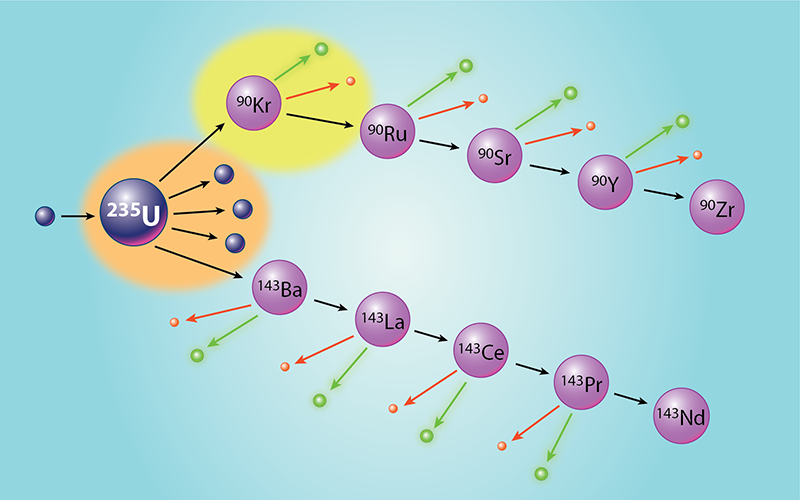Prof. Alex Gaser (Princeton) and Prof. Patrick Huber (Va. Tech) are featured in the APA Physics paper titled, “Neutrino Detectors for National Security”.
Detecting neutrinos offers a new way to monitor the potential bomb materials inside a nuclear reactor, but the technology’s practicality remains uncertain.
Read the full APA Physics publication here.

(image credit: AP / Carin Cain) In the fission process, a neutron hits a uranium-235 nucleus, breaking it into two smaller, unstable nuclei, along with a few neutrons. These smaller nuclei, most often krypton and barium, then undergo a series of radioactive decays, emitting an electron (red) and an antineutrino (green) several times. While the decay path shown here leads to the emission of eight antineutrinos, other paths produce fewer antineutrinos. On average, six antineutrinos are emitted.
